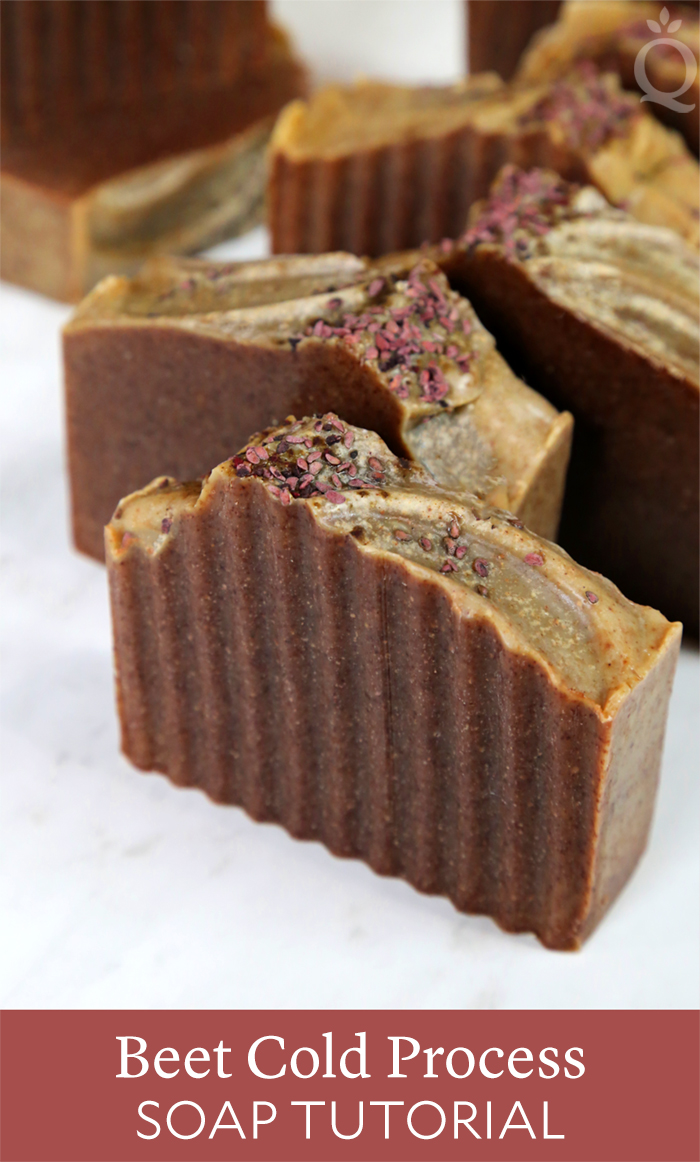
We love testing new ingredients. Beet root powder and rosehip powder are two additives that have interesting results in cold process soap. Despite its vibrant natural color, beet root powder fades almost completely in cold process soap. On the other hand, rosehip powder goes through an interesting color transformation.
This recipe contains both beet root powder and rosehip powder. Beet root powder might not add color, but it’s full of vitamins, magnesium, and folate. Rosehip powder contains plenty of vitamin C, making this bar a treat for your skin. Blackberry seeds add a rosy hue and texture on top.
Beet root powder, rosehip powder, and blackberry seeds are all part of the new Exotic Naturals Collection. Click here to see all of the new ingredients, which also include exotic oils like neem and wheat germ.
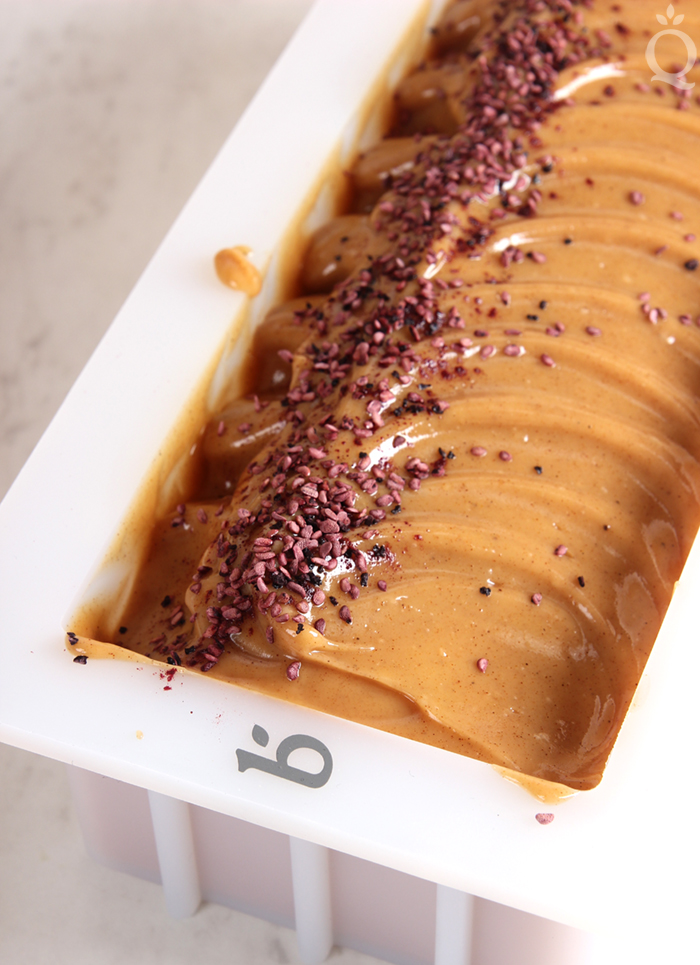
On its own, rosehip powder is a bright yellow color. This color remains when added to cold process soap batter. Once the soap is unmolded and cut into bars, that’s when things get interesting. Immediately after cutting into the soap, you’ll notice a burgundy color around the bars (shown below). Within about 10 minutes, this color makes its way throughout the entire bar of soap and deepens over 2-3 days.
Rosehip powder does color the lather a bit, and you will find that with these bars. If you’re worried about color transfer, you can use 1 teaspoon of powder. Just keep in mind you will have a lighter color.
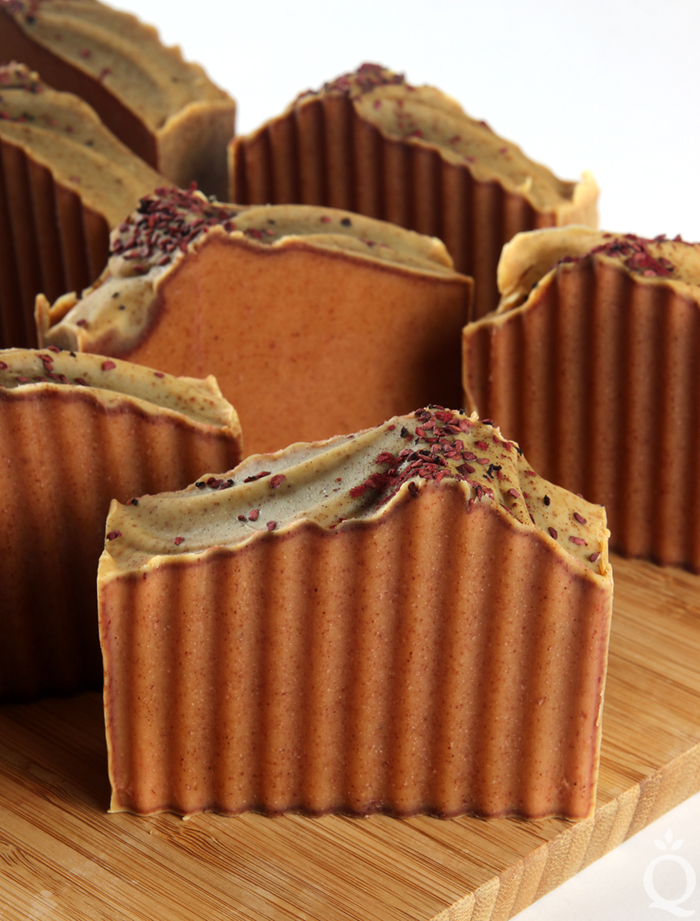
What You Need: Click here to add everything you need for this project to your Bramble Berry shopping cart!Beet Cold Process Soap Tutorial
10″ Silicone Loaf Mold
1.7 oz. Babassu Oil (5%)
3.3 oz. Cocoa Butter (10%)
8.3 oz. Coconut Oil (25%)
19.8 oz. Olive Oil (60%)
4.6 oz. Sodium Hydroxide Lye
10.9 oz. Distilled Water
2 oz. Balsam Peru Essential Oil
1 Tbsp. Beet Root Powder
2 tsp. Rosehip Powder
Blackberry Seeds
If you’ve never made cold process soap before, stop here. Check out our FREE four part SoapQueen.tv series on cold process soapmaking, especially the episode on lye safety. Bramble Berry also carries a wide range of books on the topic, including Pure Soapmaking.
COLOR PREP: Measure out 1 tablespoon of beet powder and 2 teaspoons of rosehip powder into a small container (or two separate containers). Set them aside.
FRAGRANCE PREP: Measure 2 ounces of Balsam Peru Essential Oil into a small glass container and set aside.
SAFETY FIRST: Suit up for safe handling practices. That means goggles, gloves, and long sleeves. Make sure kids, pets, and other distractions and tripping hazards are out of the house or don’t have access to your soaping space. Always soap in a well-ventilated area.
ONE: Slowly and carefully add the lye to the water and gently stir until the lye has fully dissolved and the liquid is clear. Set aside to cool. If you’d like a harder bar of soap that releases faster from the mold, you can add sodium lactate to the cooled lye water. Use 1 teaspoon of sodium lactate per pound of oils in the recipe. For this recipe, you’d add 2 teaspoons sodium lactate.
TWO: Melt and combine the coconut oil, babassu oil, cocoa butter, and olive oil in a large bowl. Add the measured beet root powder and rosehip powder directly into the oils and use the stick blender to fully mix them in.

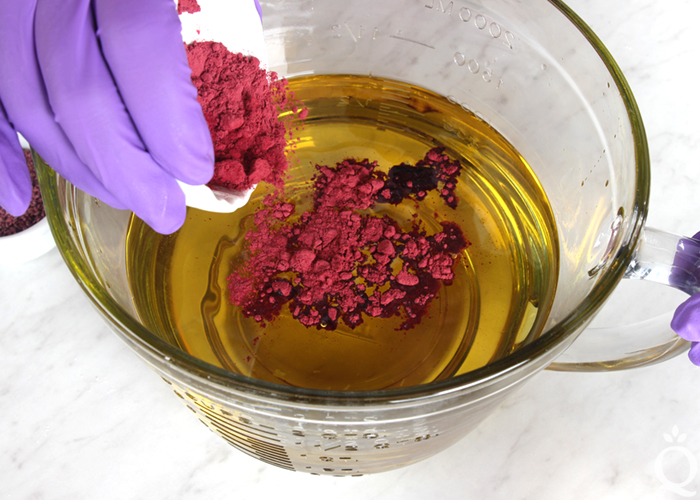
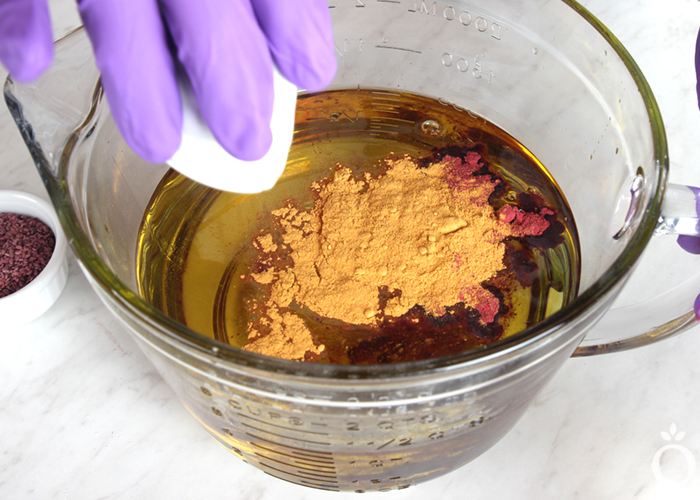
THREE: Once the lye water and the oils have cooled to 130 degrees or below (and are ideally within 10 degrees of each other), add the lye water to the oils and stick blend until thin trace.
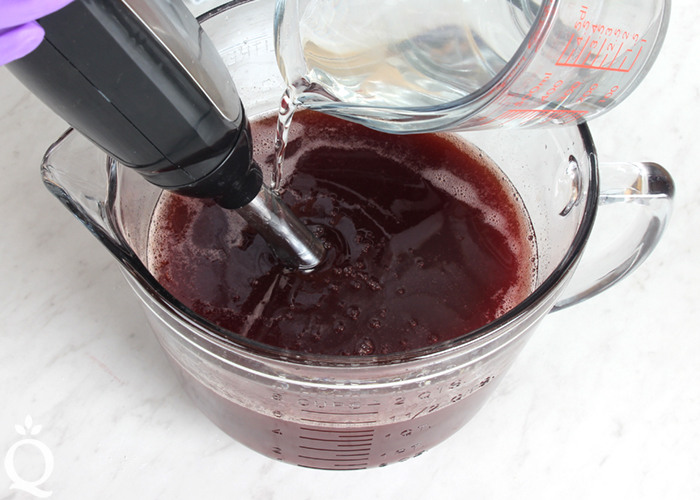
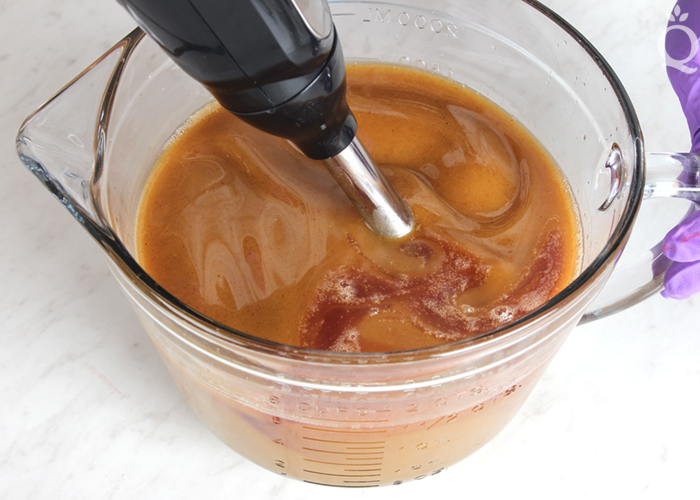
FOUR: Add the Balsam Peru Essential Oil to the soap batter. Use the stick blender to fully incorporate the essential oil.
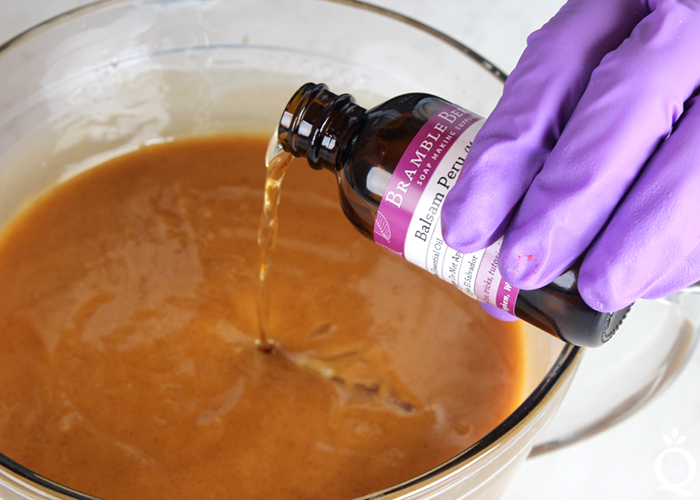
FIVE: Continue stick blending the soap batter until you reach a medium to thick trace. This may take a few minutes of blending.
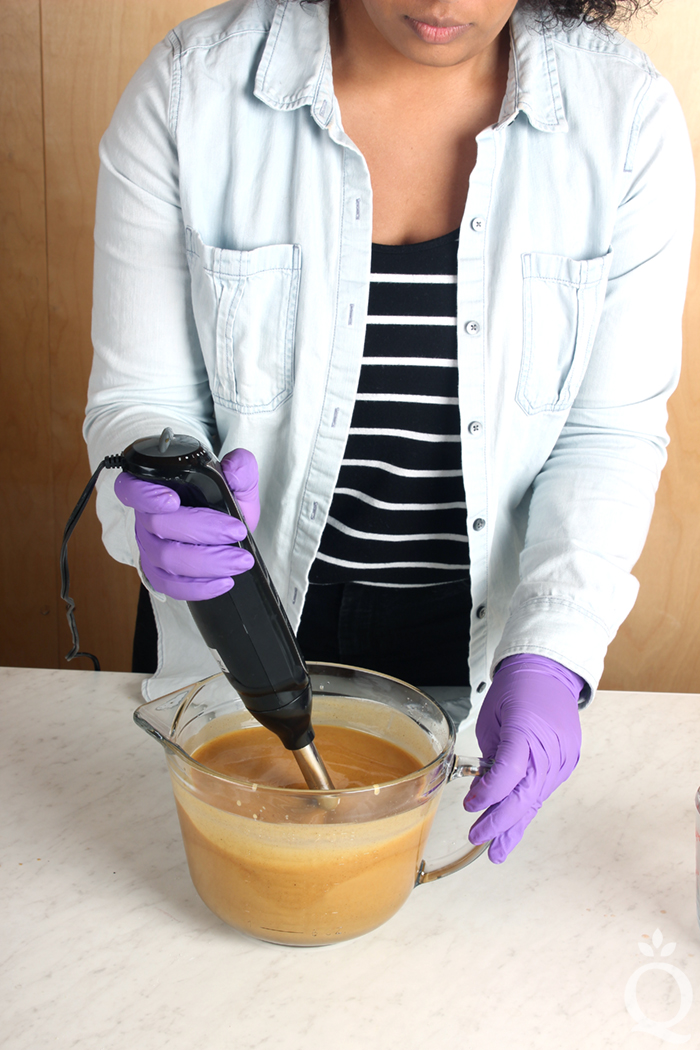
SIX: Once you’ve reached the texture of thick pudding, pour all of the soap into the mold. Tap it firmly on the counter to help get rid of air bubbles.
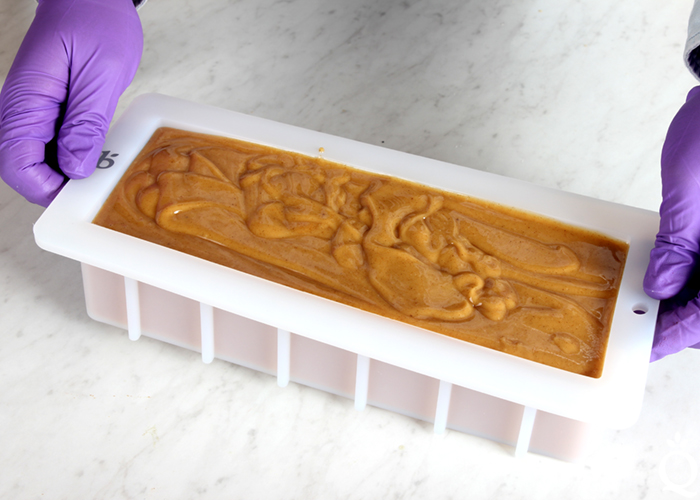
SEVEN: Use a spoon to create texture on top of the soap. We pushed the soap to one side to create a wave-like effect. If you find the soap is not holding its shape, allow it to sit in the mold for a few minutes to thicken and harden. Then, try creating texture on top again.
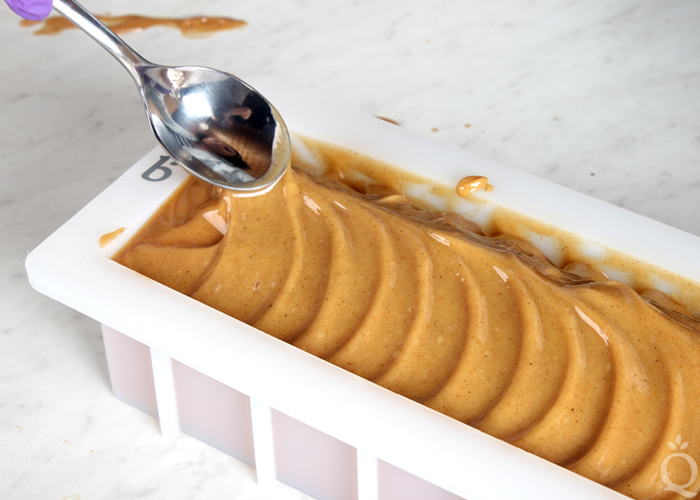
EIGHT: Once you’re happy with the top, sprinkle beet root powder and blackberry seeds on the top. We concentrated the seeds and powder on the peak of the soap.
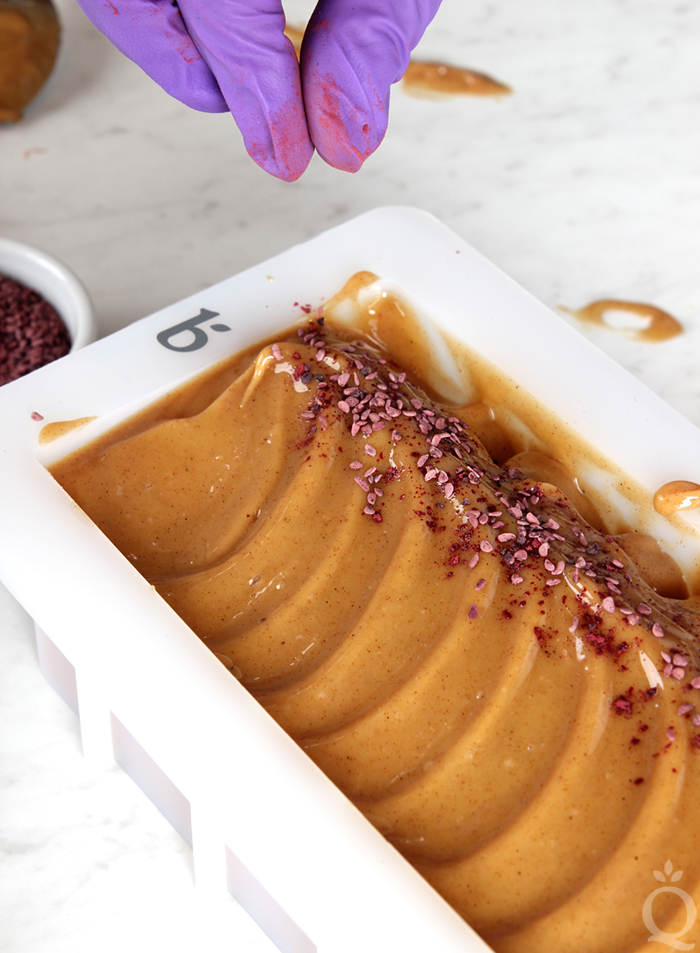
NINE: Spritz the top of the soap with 99% isopropyl alcohol to prevent soda ash. We put this soap in a drawer in a room temperature area to lightly insulate without disrupting the textured top.
Allow the soap to stay in the mold for 2-3 days. Pull the sides away from the mold to release the airlock and push the soap out from the bottom. If the mold does not pull away from the soap easily, give it another day or two in the mold. Once removed, cut into bars and allow to cure for 4-6 weeks. Enjoy.
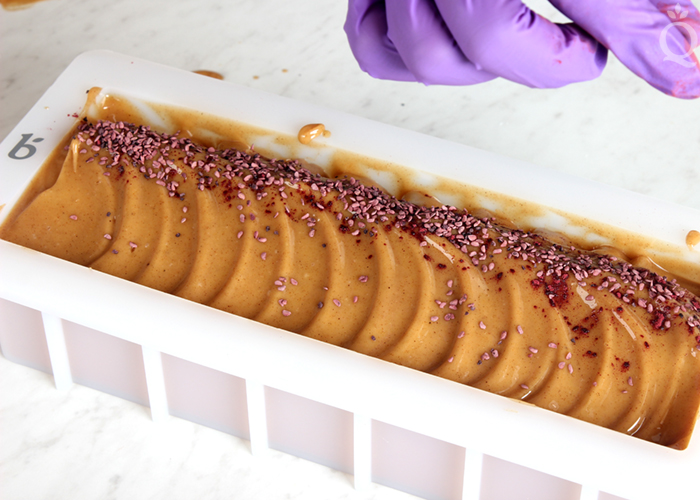
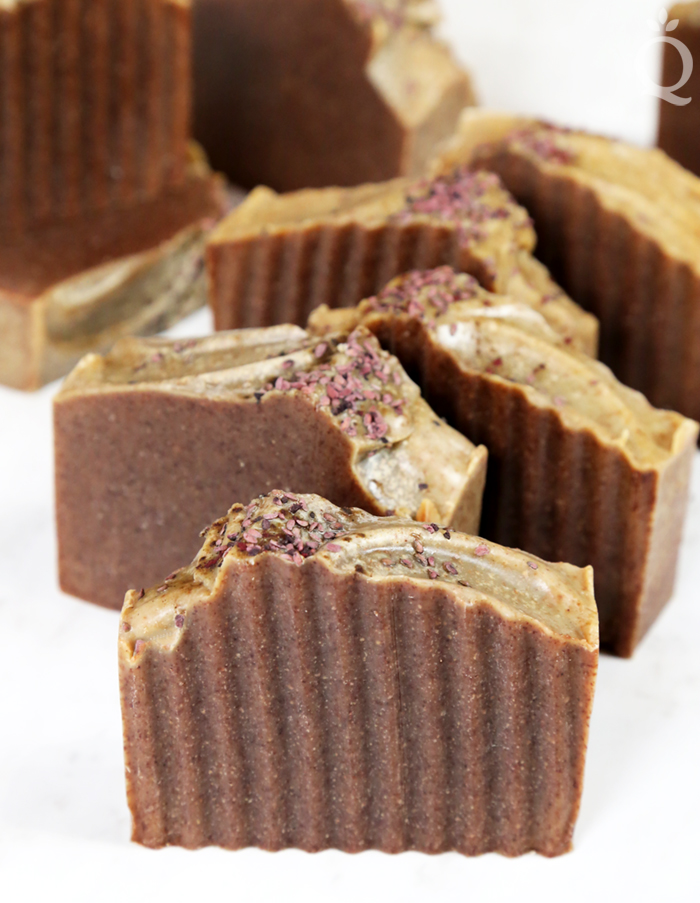
- 10″ Silicone Loaf Mold
- 1.7 oz. Babassu Oil (5%)
- 3.3 oz. Cocoa Butter (10%)
- 8.3 oz. Coconut Oil (25%)
- 19.8 oz. Olive Oil (60%)
- 4.6 oz. Sodium Hydroxide Lye
- 10.9 oz. Distilled Water
- 2 oz. Balsam Peru Essential Oil
- 1 Tbsp. Beet Root Powder
- 2 tsp. Rosehip Powder
- Blackberry Seeds
- Slowly and carefully add the lye to the water and gently stir until the lye has fully dissolved and the liquid is clear. Set aside to cool. If you’d like a harder bar of soap that releases faster from the mold, you can add sodium lactate to the cooled lye water. Use 1 teaspoon of sodium lactate per pound of oils in the recipe. For this recipe, you’d add 2 teaspoons sodium lactate.
- Melt and combine the coconut oil, babassu oil, cocoa butter, and olive oil in a large bowl. Add the measured beet root powder and rosehip powder directly into the oils and use the stick blender to fully mix them in.
- Once the lye water and the oils have cooled to 130 degrees or below (and are ideally within 10 degrees of each other), add the lye water to the oils and stick blend until thin trace.
- Add the Balsam Peru Essential Oil to the soap batter. Use the stick blender to fully incorporate the essential oil.
- Continue stick blending the soap batter until you reach a medium to thick trace. This may take a few minutes of blending.
- Once you’ve reached the texture of thick pudding, pour all of the soap into the mold. Tap it firmly on the counter to help get rid of air bubbles.
- Use a spoon to create texture on top of the soap. We pushed the soap to one side to create a wave-like effect. If you find the soap is not holding its shape, allow it to sit in the mold for a few minutes to thicken and harden. Then, try creating texture on top again.
- Once you’re happy with the top, sprinkle beet root powder and blackberry seeds on the top. We concentrated the seeds and powder on the peak of the soap.
- Spritz the top of the soap with 99% isopropyl alcohol to prevent soda ash. We put this soap in a drawer in a room temperature area to lightly insulate without disrupting the textured top. Allow the soap to stay in the mold for 2-3 days. Pull the sides away from the mold to release the airlock and push the soap out from the bottom. If the mold does not pull away from the soap easily, give it another day or two in the mold. Once removed, cut into bars and allow to cure for 4-6 weeks. Enjoy.
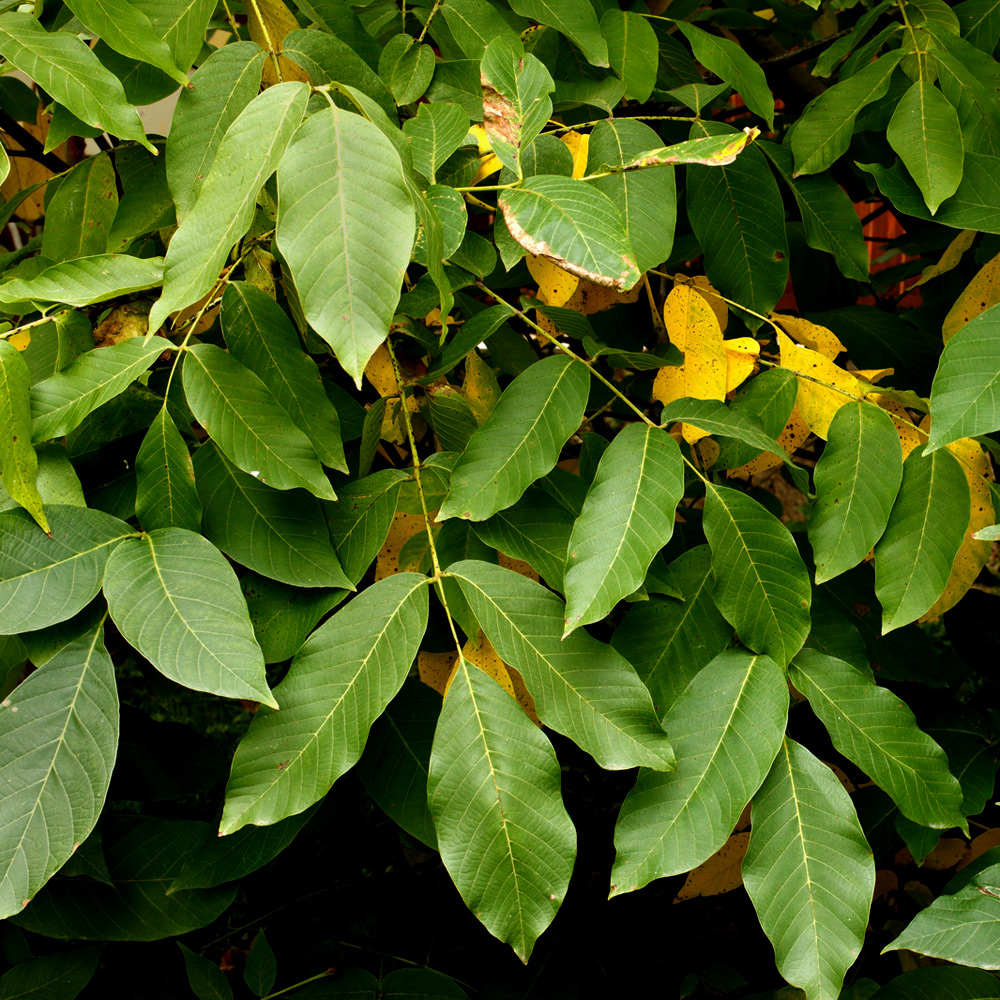
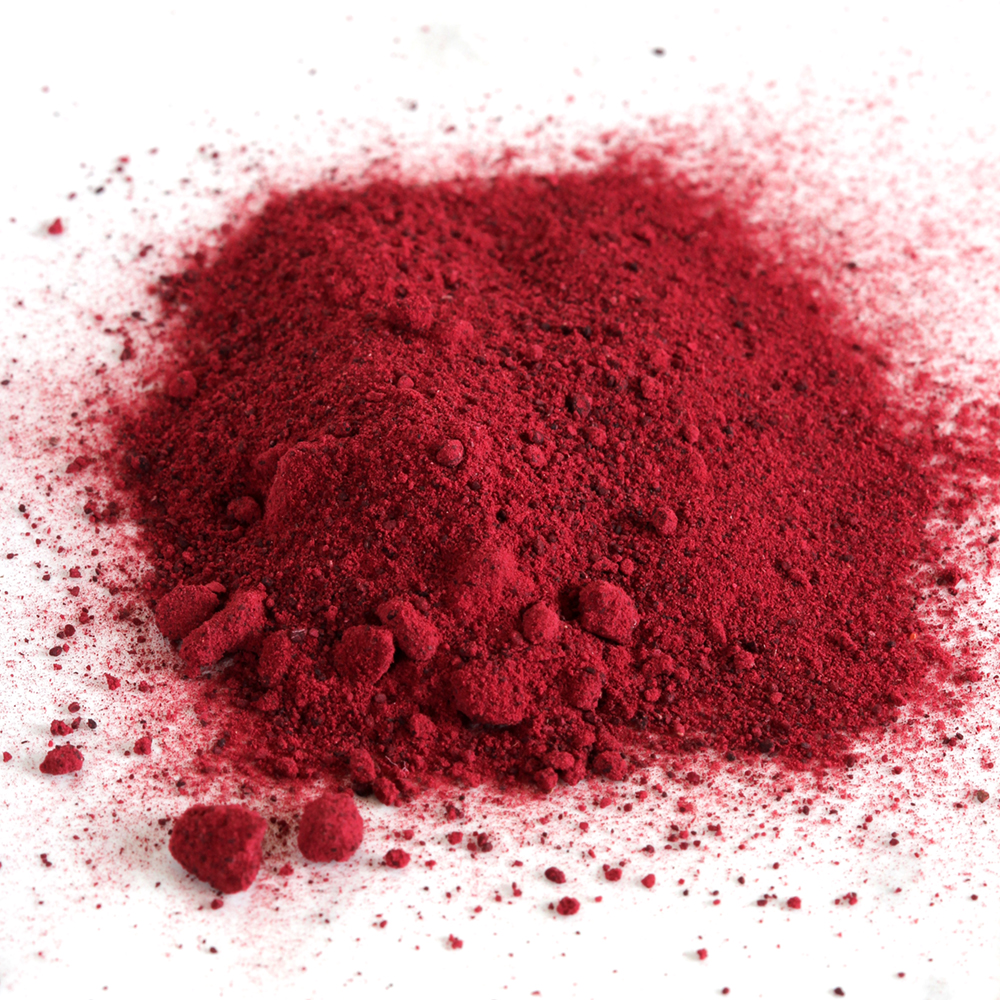
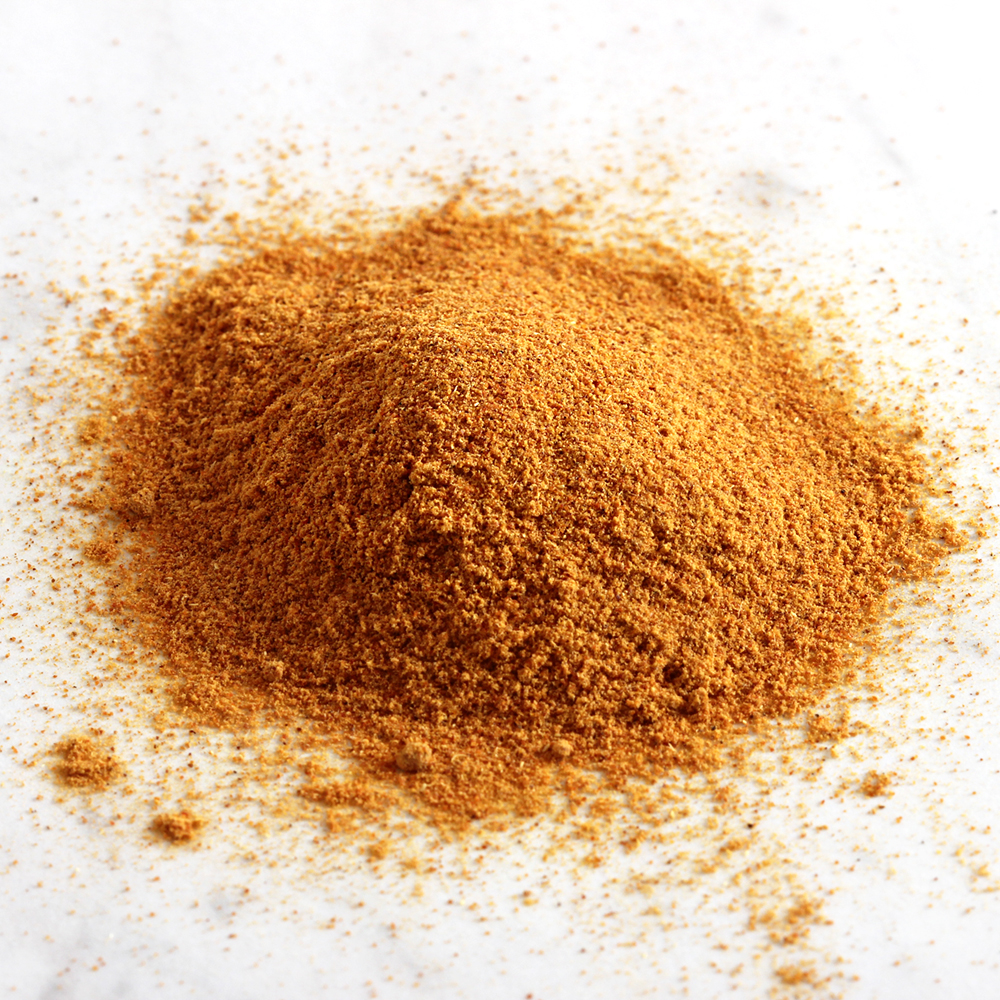
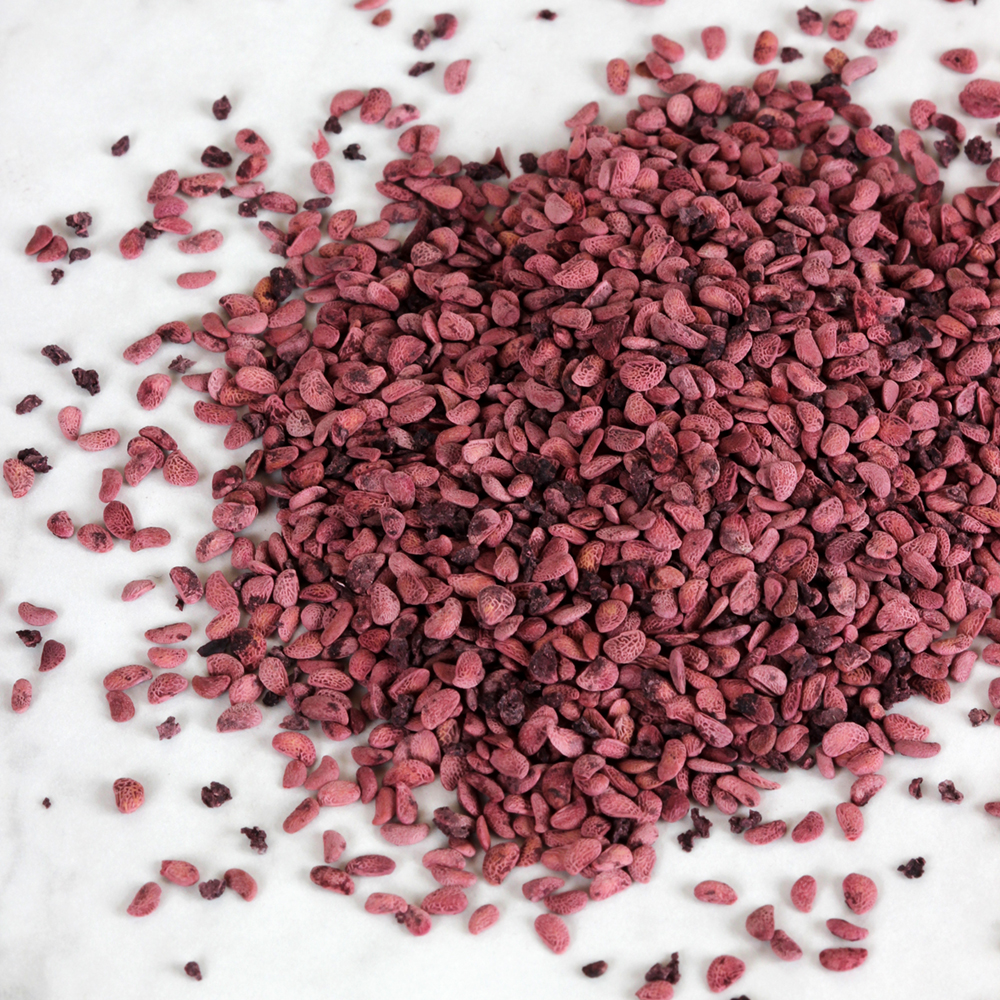
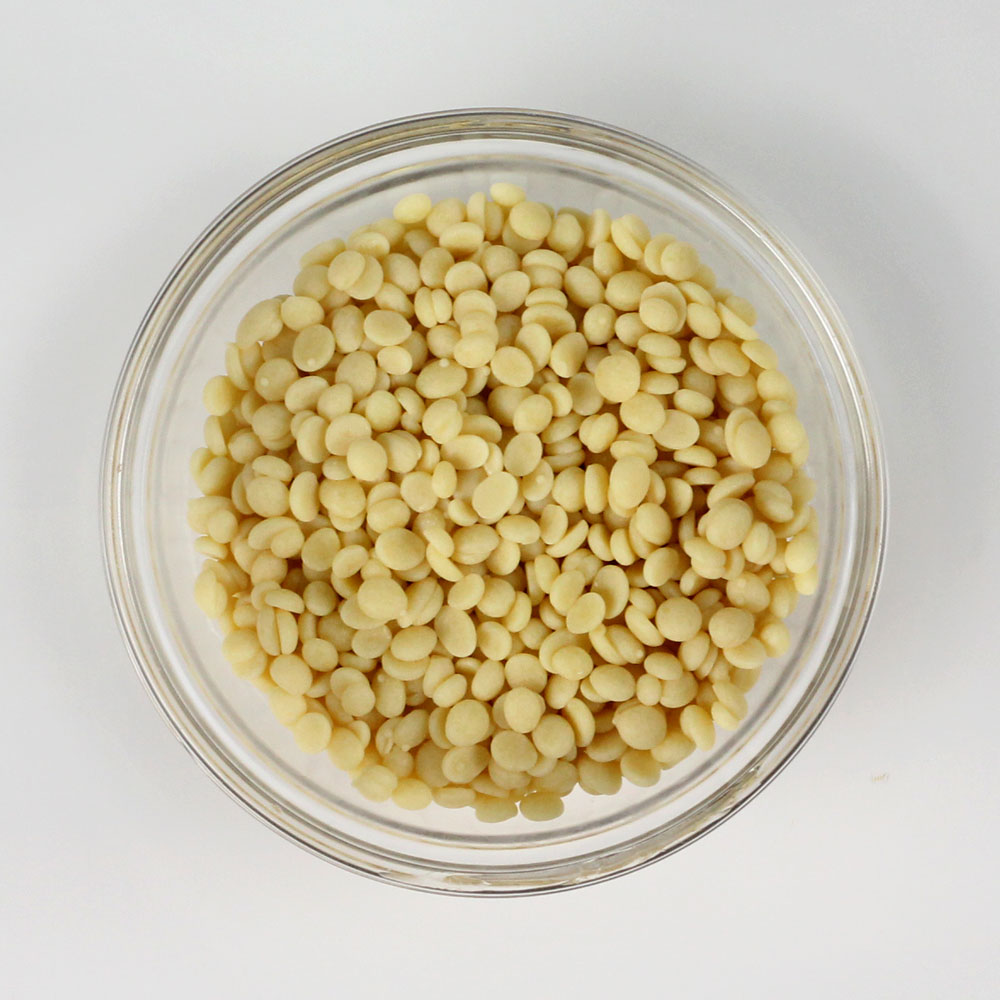
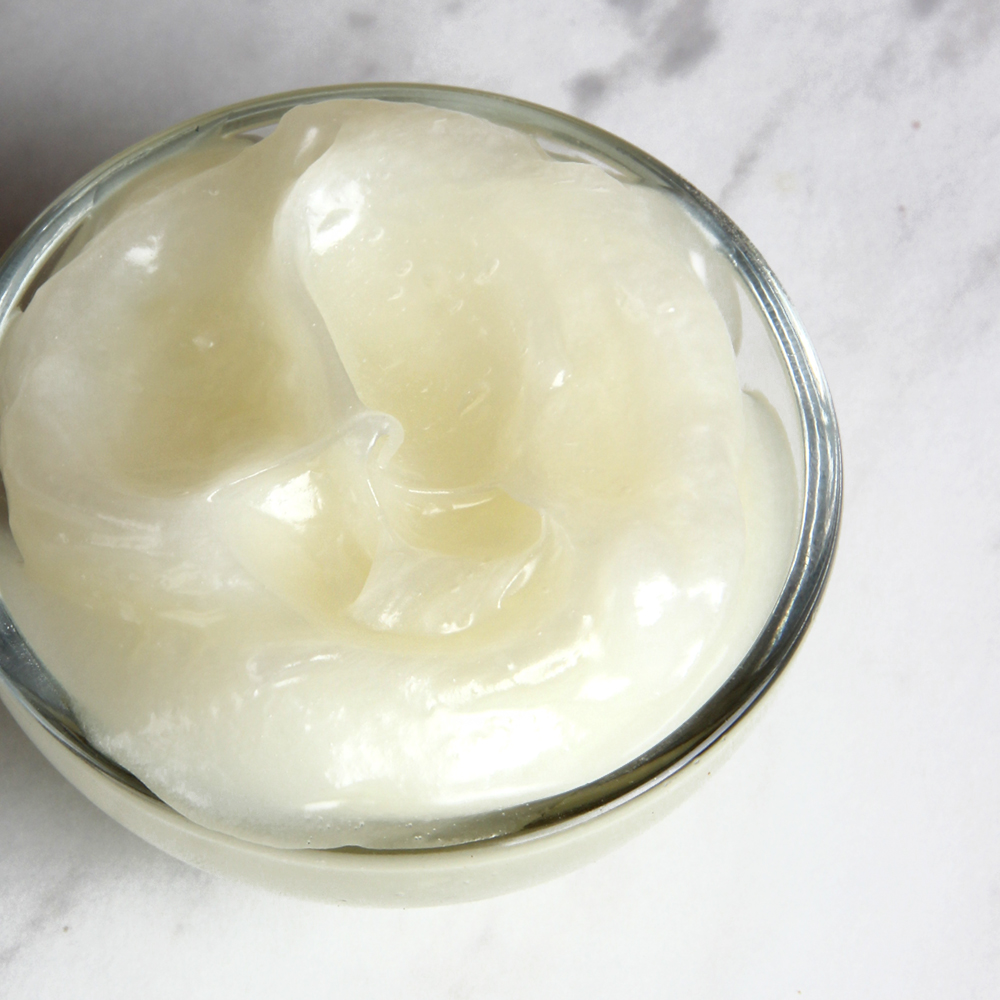
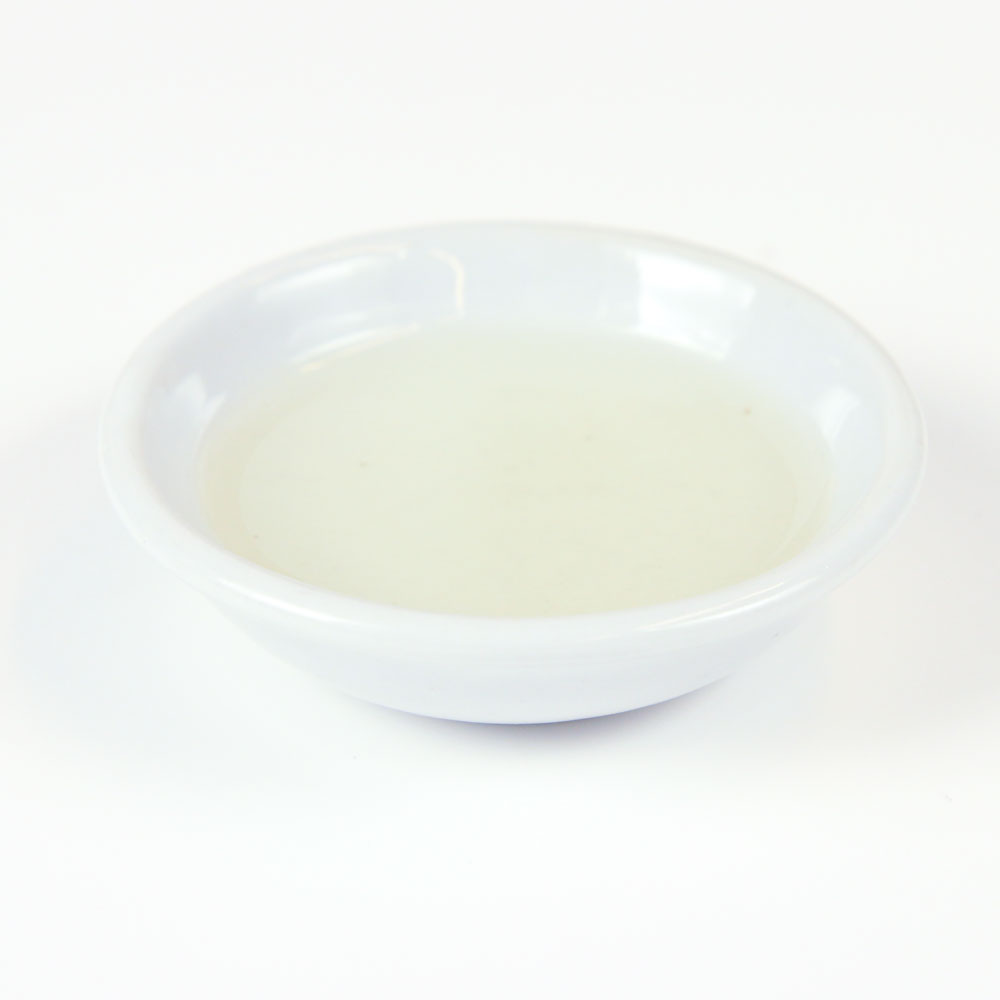
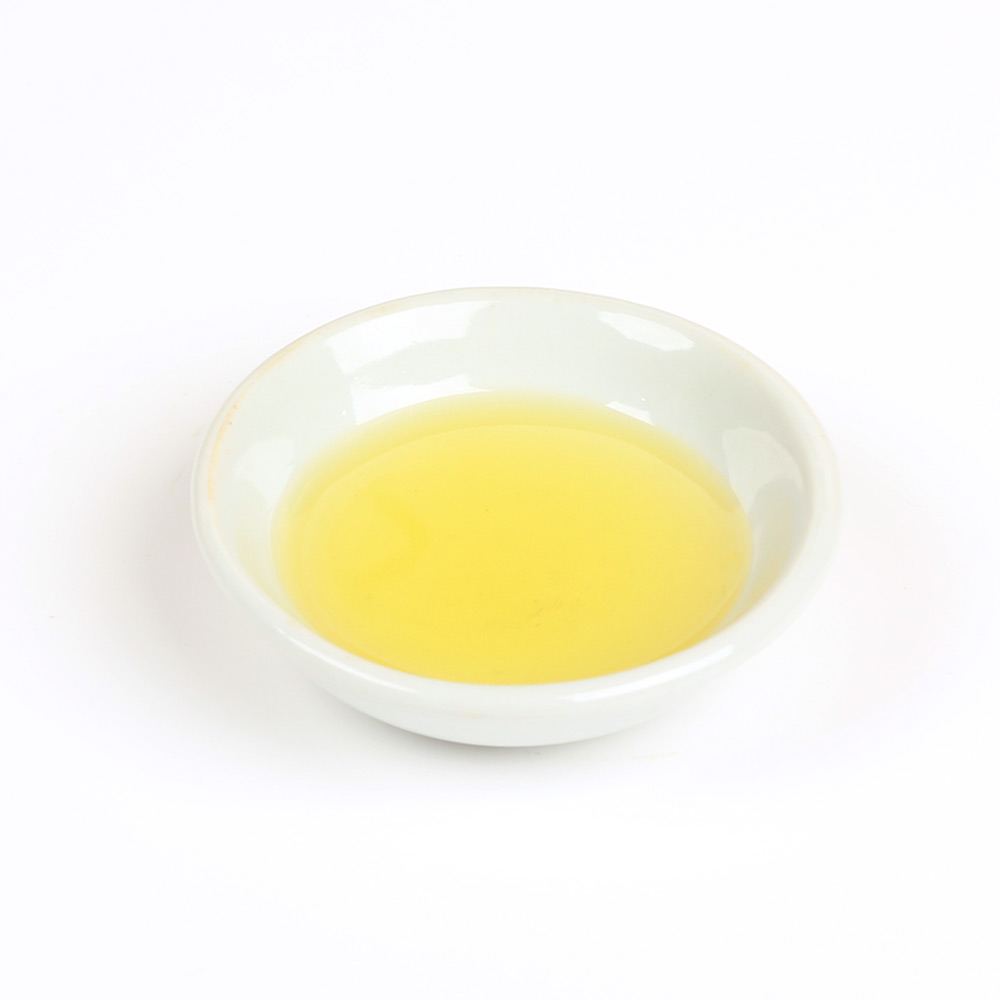
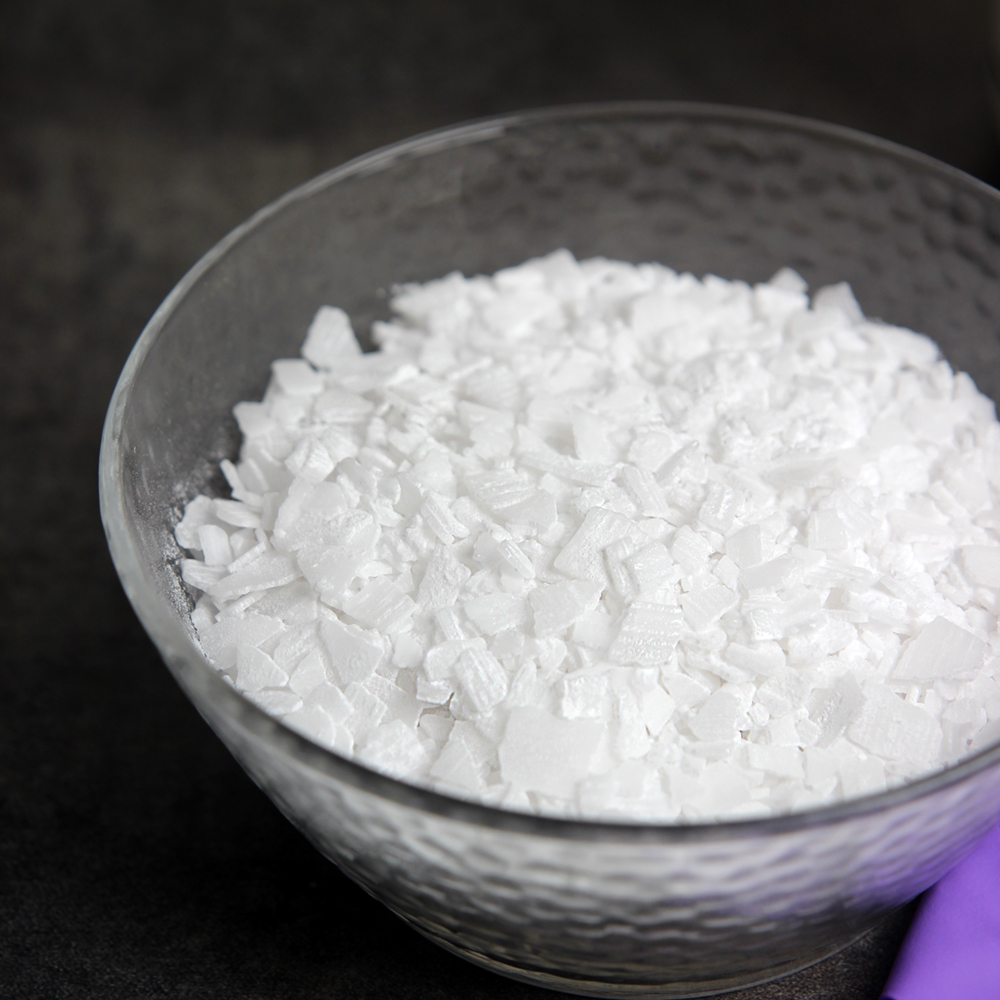



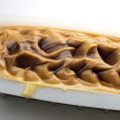

Soapmaking newbie here. The recommended soap mold for this recipe had been in backorder for quite a while, do I have to use a different mold with different dimensions. I made a different recipe last hear in the mold I’ll be using, that yielded a 3-pound loaf. How many pounds of soap does this recipe yield? I’m concerned that my bars will be odd dimensions.
Ha! Sorry, just find the info I need right at the top of the recipe. Can’t wait to try this!
Have fun Seana, let us know how it goes. 🙂
Can you substitute goat milk in this recipe? And is there a suitable substitute for the Babassu Oil?
Yes, you can use goat milk in this recipe. This post has tips for working with milk: http://www.soapqueen.com/bath-and-body-tutorials/tips-and-tricks/how-to-add-lye-to-milk-for-cold-process-soap/
For the babassu, you can replace it with palm oil or just add 5% extra coconut oil to cover the difference. Don’t forget to run your recipe through the Lye Calculator after any substitutions.
Lye Calculator: https://www.brambleberry.com/Pages/Lye-Calculator.aspx
Palm oil: https://www.brambleberry.com/Palm-Oil-P3210.aspx
Thank you! So excited to make this one! Thank you Soap Queen for the BEST inspiration and recipes!
You’re welcome Erin, thanks for your sweet comment. 🙂
hello Kelsey,
I have been making a lot of soaps using Soap Queen receipe and I love them! Thanks a lot for sharing. There is just one thing I would like to ask, – it seems like the soaps melted very easily in shower and not rock hard at all. Is there anyway to harden the soap bars?
I used sodium lactate and Steric Acid in my receipe. Also I use up to 60% of hard oils but still produce a rather soft bar that melts very quickly.
How long are you letting your soap cure? Letting it cure a full 6 weeks or more helps make harder bars that last longer in the shower. It also helps to store the soap in a dry area of the shower on a draining soap dish. This post has more tips for making your soap last longer in the shower: https://www.soapqueen.com/bath-and-body-tutorials/tips-and-tricks/make-soap-last-longer-shower/
Can I ask how you got the different colour on top of the soap bar? It’s beautiful!
To be honest we’re not really sure why the top isn’t the same color as the rest of the bars. We like the effect though. To guarantee yours is a different color, you can sprinkle a mica on top. Super Pearly White would look really lovely: https://www.brambleberry.com/Super-Pearly-White-Mica-P3463.aspx
I have used beet juice before, hoping to get aclovely bright magenta….hahaha, nope, an icky brown instead. Luckily i used a fragrance oil that discolored to a deep brown, so it wasok. The soap felt amazing on the skin and was one of my faves…
We had the same thing happen, beet powder on its own is so vibrant but that just doesn’t translate in soap. Luckily it feels great.
definately going to try this.
what color would it be if you only used rosehip powder?
And what does balsam peru smell like. It holds up in cp?
thanks!
Alanes
Beet powder fades in soap, so if you only use rosehip powder you’ll get pretty much the same color shown above. You can see soap made with beet powder here: https://www.brambleberry.com/Beet-Root-Powder-P6811.aspx
Balsam Peru holds up well in cold process soap. It’s a sweet tobacco scent reminiscent of vanilla: https://www.brambleberry.com/Balsam-Peru-Essential-Oil-P4443.aspx
A very interesting idea. I’ve not seen this, but I have seen other soapers dice and cook beets and use the beet water to make soap. Some freeze it like you would milk and some of the color is retained. It’s always good to see new ideas!
That’s a good idea, we’ll have to try beet water to see how it works.
Do the “vitamins, magnesium and folate” that you mentioned beet root powder contains survive the soap making process enough to be absorbed (at least somewhat) into skin?
It’s tough to say – cold process soap is a really harsh environment and the nutrients may not survive the pH changes. I can tell you the combination of ingredients in this bar feels amazing on the skin. I would recommend giving the beet root powder a try to see what you think.
Love this color, beetroot powder by itself does not give such a pretty look in CP soaps but I like it with rosehip powder. Thank you for sharing.
You’re welcome, thanks for reading.